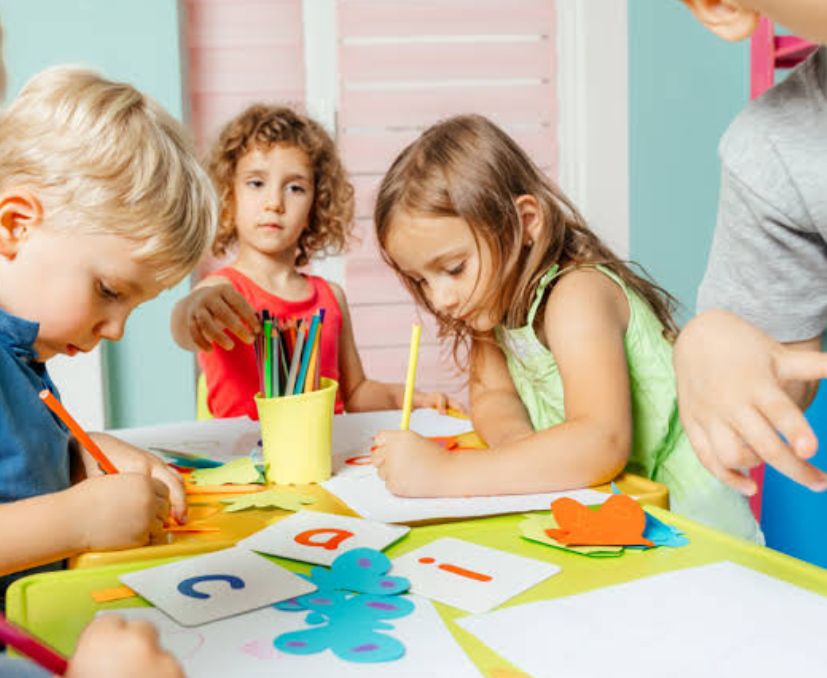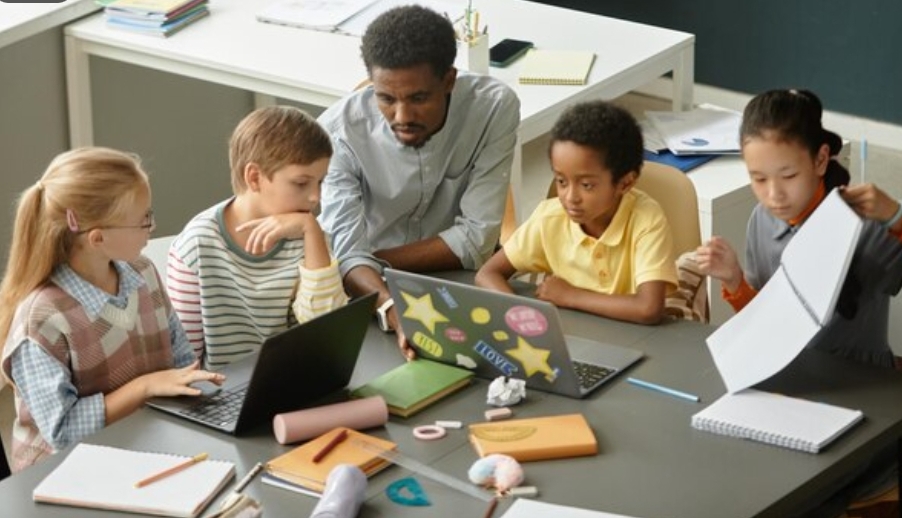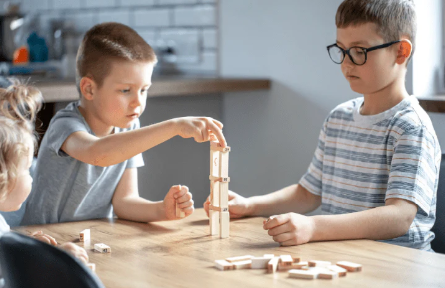
Welcome parents, caregivers, and educators! Early childhood education (ECE) is a crucial stage that lays the foundation for a child’s lifelong learning journey. It’s a time of incredible growth and development, filled with exploration, curiosity, and a thirst for knowledge. But with so much information swirling around, it can feel overwhelming. Fear not! We’re diving into your top concerns to empower you to navigate this exciting chapter.
Question: Is screen time detrimental in Early Childhood Education?
Answer: Not necessarily, but moderation and quality are key! While excessive screen time can certainly be detrimental, educational technology trends offer fantastic tools for learning when used appropriately. Imagine high-quality educational apps or programs that use interactive games, engaging songs, and captivating stories to teach children essential concepts like letter recognition, basic math skills, or even a new language in a fun and interactive way. However, screen time should never replace the irreplaceable benefits of hands-on exploration and social interaction.
Here’s a balanced approach:
Focus on Quality: Seek out educational apps or programs developed by reputable companies that align with early learning standards. Look for features like age-appropriate content, interactive elements that encourage active participation, and limited advertising.
Set Time Limits: Establish clear guidelines for screen time based on your child’s age and developmental stage. The American Academy of Pediatrics recommends avoiding screen time for children under 18 months and limiting it to one hour per day for children ages 2-5.
Make it Interactive: Don’t let screen time become a passive experience. Co-play with your child! Engage in discussions about what they’re seeing on the screen, ask questions, and use the app or program as a springboard for further exploration and learning activities.
Question: How can I prepare my child for kindergarten in a remote learning environment?
Answer: Remote learning strategies can be adapted for early childhood education! While remote learning might seem daunting for young children, there are ways to prepare them for a successful kindergarten experience even in a virtual setting.
Here are some tips:
Build Digital Skills Development: Focus on age-appropriate activities that introduce basic computer skills. There are many educational games and apps that can help children navigate a virtual environment, use a mouse or touchpad, and become familiar with logging in and using online tools.
Practice Routines: Create a consistent routine for virtual learning sessions. This could involve setting up a dedicated learning space in your home, having them log in at a specific time each day, and establishing expectations for behavior during online classes.
Social Interaction (Remotely): While in-person interaction is irreplaceable, there are ways to foster social connections in a remote learning environment. Look for online programs that incorporate group activities or breakout sessions where children can interact with their peers virtually.
Most Importantly: Create a Stimulating Environment: Remember, remote learning doesn’t have to be all virtual! Balance online sessions with plenty of opportunities for hands-on learning, creative play, and exploration in the real world. Read books together, sing songs, build with blocks, and explore the outdoors.
Question: What are some signs my child might need extra support?
Answer: Every child develops at their own pace. However, if you notice significant delays in specific areas, it’s important to seek professional guidance.
Here are some signs that might indicate your child could benefit from extra support:
Speech and Language Development: Is your child meeting typical milestones for speech and language development for their age? Are they struggling to express themselves clearly or understand basic instructions?
Motor Skills: Is your child having difficulty with gross motor skills like running, jumping, or climbing stairs? Are they lagging behind in fine motor skills like holding a crayon or manipulating buttons?
Social Interaction: Does your child seem withdrawn or disinterested in playing with other children? Do they have difficulty taking turns, sharing, or following social cues?
Behavioral Concerns: Is your child experiencing frequent tantrums, outbursts of aggression, or difficulty regulating their emotions?
Early intervention is crucial! If you have any concerns about your child’s development, talk to your pediatrician or a child development specialist. They can conduct a thorough evaluation and recommend appropriate resources or interventions to support your child’s individual needs.
Question: How can I deal with picky eaters at daycare or preschool?
Answer: It’s a common concern, and there are ways to navigate it! Picky eating is a normal part of childhood development. Here are some tips to work together with your child’s caregiver to address picky eating at daycare or preschool:
Communication is Key: Talk to your child’s caregiver about their approach to mealtimes. Discuss your child’s typical eating habits and any specific preferences or dislikes they have.
Involve Your Child: Get your child involved in age-appropriate ways during meal prep. This could involve helping wash fruits or vegetables, setting the table, or choosing a healthy snack option from a few pre-selected choices.
Positive Mealtime Environment: Create a calm and positive mealtime environment. Avoid distractions like screens and focus on making mealtimes a social experience where children can enjoy conversation and learn healthy eating habits from their peers and caregivers.
Variety is Key: Offer a variety of healthy options at mealtimes, including fruits, vegetables, whole grains, and lean protein. However, don’t overwhelm children with too many choices.
Focus on Exposure, Not Pressure: Expose your child to new foods, but don’t force them to eat anything they dislike. It can take multiple exposures for a child to develop a taste for a new food.
Celebrate Small Victories: Acknowledge and celebrate your child’s efforts to try new foods, even if they only take a small bite.
Question: My child throws tantrums at drop-off time. What can I do?
Answer: Separation anxiety is common, but there are strategies to ease the transition. It’s normal for young children to experience separation anxiety, especially when starting at a new daycare or preschool.
Here are some tips to help ease the transition:
Develop a Consistent Goodbye Routine: Create a predictable goodbye routine that provides your child with a sense of security. This could involve a hug, a kiss, and a special goodbye song or phrase.
Comfort Object: Provide your child with a comfort object, like a stuffed animal or a blanket, that they can take with them to daycare or preschool. This familiar object can offer a sense of comfort and security during separation.
Talk to Your Child’s Caregiver: Communicate with your child’s caregiver about your child’s separation anxiety. They can develop strategies to help your child feel comfortable and welcome in the classroom setting.
Reassurance is Key: Reassure your child that you will be back to pick them up after daycare or preschool. You can even create a visual schedule with pictures to help them understand the concept of time and anticipate your return.
It Takes Time: Be patient and understanding. It may take some time for your child to adjust to the new environment. However, with consistent routines, positive reinforcement, and open communication, they will eventually feel comfortable and secure at daycare or preschool.
Question: How can I create a stimulating learning environment at home?
Answer: You don’t need fancy toys! Focus on open-ended play and exploration. While educational toys can have a place, the most stimulating learning environments are often the simplest. Here’s how to create a nurturing space for your child’s development at home:
Open-Ended Play Materials: Provide your child with a variety of open-ended play materials that encourage creativity and imagination. Think blocks, play dough, art supplies, puzzles, and sensory bins filled with rice, beans, or water.
Sing Songs and Read Books: Singing songs and reading books together are fantastic ways to bond with your child, promote language development, and spark a love of learning. Choose books that are colorful, engaging, and appropriate for your child’s age and interests.
Encourage Exploration: Create opportunities for your child to explore the outdoors. Go for walks in nature, visit parks, or simply play in your backyard. Exploring the natural world allows children to learn about plants, animals, weather patterns, and the wonders of the world around them.
Remember, the most important element of a stimulating learning environment is interaction with you! Engage with your child during playtime, ask open-ended questions, narrate their actions, and celebrate their discoveries.
Question: Are there online resources to supplement my child’s early education?
Answer: Absolutely! The digital world offers a wealth of educational resources for young children. There are many websites and apps specifically designed to support early childhood education. Here’s how to find high-quality resources:
Utilize E-learning Platforms Comparison Websites: Don’t waste time sifting through countless options! Utilize e-learning platforms comparison websites to find reputable resources that are age-appropriate and engaging for your child.
Focus on Quality: Look for apps or programs that focus on quality over quantity. Choose educational resources that align with early learning standards and incorporate elements like:
Interactive Features: Look for apps or programs that go beyond passive viewing and encourage active participation through games, puzzles, sing-alongs, or creative activities.
Limited Advertising: Avoid apps or websites bombarded with advertising, as this can be distracting and overwhelming for young children.
Educational Value: Ensure the content aligns with your child’s developmental stage and learning goals. Look for resources that promote literacy, numeracy, social-emotional skills, and cognitive development.
Question: How can I stay involved in my child’s early education, even if I work full-time?
Answer: Communication and small moments matter! Even with a busy work schedule, you can stay involved in your child’s early education.
Here are some tips:
Communication is Key: Maintain open communication with your child’s caregiver. Talk to them regularly about your child’s day, ask questions about their activities and learning experiences, and share any observations you have at home.
Quality Time Over Quantity: While extended playtime might be limited, focus on creating quality moments of connection. Read a bedtime story together, even if it’s virtually before bed. Sing songs, talk about their day, and show genuine interest in their experiences at daycare or preschool.
Utilize Technology: Technology can be your friend! Utilize video calls to connect with your child during the day or after work. Read stories together virtually or use online tools to share pictures and drawings.
Get Involved in the Classroom (When Possible): If your work schedule allows, consider volunteering in your child’s classroom or participating in school events. This allows you to see firsthand what your child is learning and connect with their teachers and classmates.
Question: What are some ways to encourage creativity in young children?
Answer: Embrace open-ended play and provide opportunities for exploration!
Here are some ways to nurture your child’s creativity:
Open-Ended Play Materials: As mentioned before, open-ended play materials are the cornerstone of fostering creativity. These materials allow children to use their imagination, experiment, and create something new without limitations.
Process Over Product: Focus on the process of creating, not the end product. Allow your child to explore different materials, experiment with different techniques, and celebrate their imagination and the joy of creating, regardless of the final outcome.
Limit Structured Activities: While structured activities have their place, avoid overscheduling your child’s day. Leave ample time for unstructured play, where they can follow their own interests and explore their creativity freely.
Art Activities: Provide opportunities for art activities like painting, drawing, sculpting, or playing with play dough. Art allows children to express themselves creatively and explore different colors, textures, and shapes.
Storytelling and Make-Believe: Encourage storytelling and make-believe play. Act out stories together, create puppets, or build a dramatic play area where your child can dress up and explore imaginary worlds.
Question: I feel overwhelmed! Where can I find support as a parent?
Answer: You’re not alone! There’s a wealth of resources available to support you on this parenting journey.
Here are some resources to help you navigate early childhood education:
Online Communities: Connect with other parents of young children through online communities and forums. Share experiences, ask questions, and offer support to one another.
Online Tutoring Services: Consider seeking guidance from experienced educators through online tutoring services. They can provide personalized advice, address specific concerns, and offer strategies to support your child’s learning and development.
Self-Paced Online Courses: There are many self-paced online courses available on topics related to early childhood education. These courses can equip you with the knowledge and skills to navigate this important stage and feel more confident in your parenting journey.
Remember, early childhood education is a collaborative effort. Don’t be afraid to reach out for help and utilize the many resources available to you. By creating a nurturing and stimulating environment, fostering open communication, and celebrating your child’s unique journey, you can empower them to thrive and become lifelong learners!
What are your biggest challenges or triumphs in early childhood education? Share your thoughts and experiences in the comments below! Together, let’s create a world where every child feels supported, valued, and empowered to reach their full potential!
#EarlyChildhoodEducation #ParentingTips #LearningThroughPlay #FutureLearners










